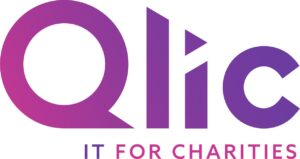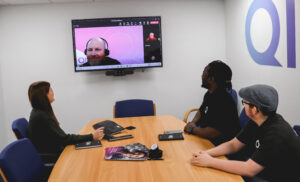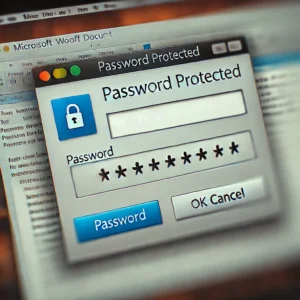Charities and nonprofits are champions of change, striving to make a positive impact in the world despite limited resources and competing priorities. However, communication and collaboration across teams and organisations can be a major roadblock to success, particularly in today’s fast-paced digital landscape. This is where Microsoft Teams is here to help! With its core functionality and powerful integrations, Team’s status as a collaboration platform can help charities boost productivity, improve communication, and optimise their resources.
In this blog, we’ll take a deep dive into some of the most powerful Microsoft Teams integrations for charities. So, get ready to discover how Teams can transform the way your charity works and help you make an even greater impact on the world!

Understanding Microsoft Teams
Microsoft Teams for charities is a collaboration platform that is designed to streamline communication and simplify teamwork. It’s essentially a chat-based workspace that allows individuals and teams to collaborate on projects, share files, hold meetings, and integrate with other Microsoft applications all in one place. With Teams, users can send instant messages and make voice or video calls, making it easy to stay connected with colleagues anywhere in the world.
Additionally, Teams offers robust security features, such as multi-factor authentication and encryption, to ensure that sensitive information remains protected at all times. Benefits of Microsoft Teams include seamless integration with Microsoft 365’s productivity tools such as Word, Excel, and PowerPoint. This makes it a versatile platform for organisations of all sizes and industries.
Microsoft Teams also has a user-friendly interface with an attractive intuitive design that is easy to introduce your organisation to. Whether your charity is more in touch with the digital world or not, Teams offers a great user experience to charity staff regardless of limited IT knowledge.
Essential Microsoft Teams Features for Charities
Let’s take a closer look at Microsoft Teams’ key features that are particularly valuable for charities and nonprofits.
- Channels and Messaging
- Video and Audio Conferencing
- File Sharing and Collaboration
- Integration with Other Apps and Tools
1. Channels and Messaging
Teams Channels and Messaging offer a multitude of benefits for organisations looking to streamline communication and optimise collaboration. Firstly, channels allow teams to organise conversations by specific projects, making it easier to find relevant information quickly. With channels, users can share messages, tools, and files all in one place, as well as offering robust collaboration features such as real time editing of documents and seamless integration with Microsoft’s other apps.
Microsoft Teams messaging allows for quick and easy individual or group chats without the need to switch to a different platform. Charity staff can name Teams conversations, create group chats and search files saved to conversations.
2. Video and Audio Conferencing
Video and audio conferencing on Teams work to help your organisation communicate and collaborate efficiently. Microsoft Teams allows users to join meetings from anywhere with an internet connection. The capabilities of Teams’ video conferencing go beyond just video as charity staff can share screens, files and even record meetings to refer to at a later date. This helps to reduce travel costs and improve collaboration among remote workers as you can communicate over a simple platform.
Audio conferencing allows up to 1000 phone participants to join a Teams meeting, making it an ideal solution for both meetings and webinars. Teams’ video and audio conferencing are powerful tools that can help organisations improve efficiency and functionality.
3. File Sharing and Collaboration
Microsoft Teams file sharing and collaboration features allow users to upload, share and edit files in real-time, making it easy for charity teams to work together on projects virtually. Documents and files can be shared between teams and projects in one place. As well as this, your charity staff can all collaborate on shared files at the same time. This helps to improve communication between teams, especially when working on a project. Microsoft Teams seamlessly integrates with the Microsoft 365 suite of apps, such as SharePoint and OneDrive, allowing for easy document editing and storage for all staff.
4. Microsoft Teams Integration with Other Apps and Tools
Microsoft Teams allows for integration with third party apps and tools. This enables users to access all their tools in one place. Microsoft Teams project management is made easier through integration with collaboration tools like Trello or Asana. This makes it easier for teams to collaborate on tasks and projects. Additionally, Teams can integrate with customer relationship management (CRM) software like Salesforce, simplifying sales workflows and improving customer relationships. Finally, Teams also integrates with fundraising software and platforms such as Preact and much more.
Centralising workflows through integrations on Microsoft Teams is a great way to help maximise productivity within your charity organisation.
Customising and Extending Microsoft Teams
Microsoft Teams for charities offers a wide range of customisation options that allow charities to tailor the platform to meet their specific needs. Charities can completely customise the look and feel of their Teams by using custom backgrounds, logos, and colours. However it is also possible to tailor your Microsoft Teams experience to better meet your charity’s needs This can be done using the following functionality:
- Tabs and Connectors
- Bots and Automation
- Power Apps and Power Automate
1. Tabs and Connectors in Microsoft Teams
Charity organisations can leverage tabs on Microsoft Teams to integrate external tools, websites, or dashboards directly into a Teams channel or chat, providing quick access to essential information and reducing context switching. Microsoft Teams also has pre-built tabs, eg. SharePoint, Excel, Planner, and Power BI. These can be added to channels or chats to display relevant content or documents. You can easily pin certain tabs that you would like to be visible at the top of the channel or chat. This makes it easy for team members to find and access the integrated tools or websites.
You can receive notifications and updates from other Microsoft apps and third-party tools using Connectors. Microsoft Teams offers a range of these connectors that can work with third-party services to bring information directly into Teams. It is also possible to create custom connectors whereby charity staff can integrate custom-built apps directly into Teams.
2. Bots and Automation
Bots are a powerful tool that can be used in Teams to simplify tasks and streamline workflows. Microsoft Teams bots can be used to notify users about upcoming events such as meetings or deadlines, ensuring that all staff and volunteers are on track with their work day and are informed. Bots can even automate reminders or send follow-up messages, further optimising workflows. You can also integrate bots with other apps and services, allowing users to perform tasks without leaving Teams. For example, a bot could be created to book travel or schedule appointments with clients.
3. Power Apps and Power Automate
Power Apps allows users to build custom applications with drag-and-drop functionality and pre-built templates within Microsoft Teams. Power Automate allows for the creation of custom workflows that automate repetitive or manual tasks, saving time and boosting efficiency. You can use the Power Automate app for Microsoft Teams to enable your staff to automate their activities and connect with other apps and services within Teams.
- Power Automate flows can be used in three scenarios within Microsoft Teams: Trigger flows from Team messages – In this scenario, you can create flows that are triggered through Teams messages. For example you can create a flow that sends a notification email when someone sends a message in teams that contains a particular keyword.
- Using Adaptive Cards to trigger flows in Teams – Power Automate allows for the creation of custom triggers in Microsoft Teams using Adaptive Cards. For instance, you can create a button using Adaptive Cards and get that button to perform a designated action when clicking on it in Teams.
Using the Power Apps app directly within Teams to create flows – This app uses Dataverse for Teams, which is a low-code solution that is built-into Teams. It allows you to use Power Apps and Power Automate To build custom apps and workflows.
Microsoft Teams Power Apps is available with all Microsoft 365 for charities licences but there are different capabilities extended with Power Automate depending on what nonprofit licence you have for Microsoft 365 or Dynamics 365. Find out more about accessing Microsoft Teams Power Apps.
Microsoft Teams Integration Considerations for Charities
Integrating Microsoft Teams leaves your charity with a few things to consider, such as fitting in with current procedures, hardware and IT environment. The main things to consider when implementing Microsoft Teams are data security, migration of existing data and training staff.
If you make sure this is addressed and mapped out before integrating Microsoft Teams, the transition will be smooth and simple for your organisation. You can then maximise the benefits of Teams for improving work efficiency and functionality.

Closing Remarks on Microsoft Teams Integration for Charities
Microsoft Teams offers a range of powerful tools to help charities improve their efficiency and streamline functionality and workflows. Your charity organisation will be able to file share, collaborate, automate and customise workflows. Teams provides a centralised hub for staff and volunteers to work together more effectively, and with continual updates and improvements, its value for charities only increases. By leveraging Teams’ intuitive interface and seamless integration with Microsoft apps and third party services, charities can significantly improve their communication and collaboration experience and strategies.
Microsoft Teams makes it easy for charities to tailor the platform to their specific needs and achieve their goals faster. Overall, integrating Microsoft Teams into your charity’s IT ecosystem is essential for charities looking to optimise their operations and drive efficiency and functionality within the team.
Could your charity benefit from more efficient and automated processes? Contact us for a free consultation, and discover how your workforce can benefit from using Microsoft Teams.
